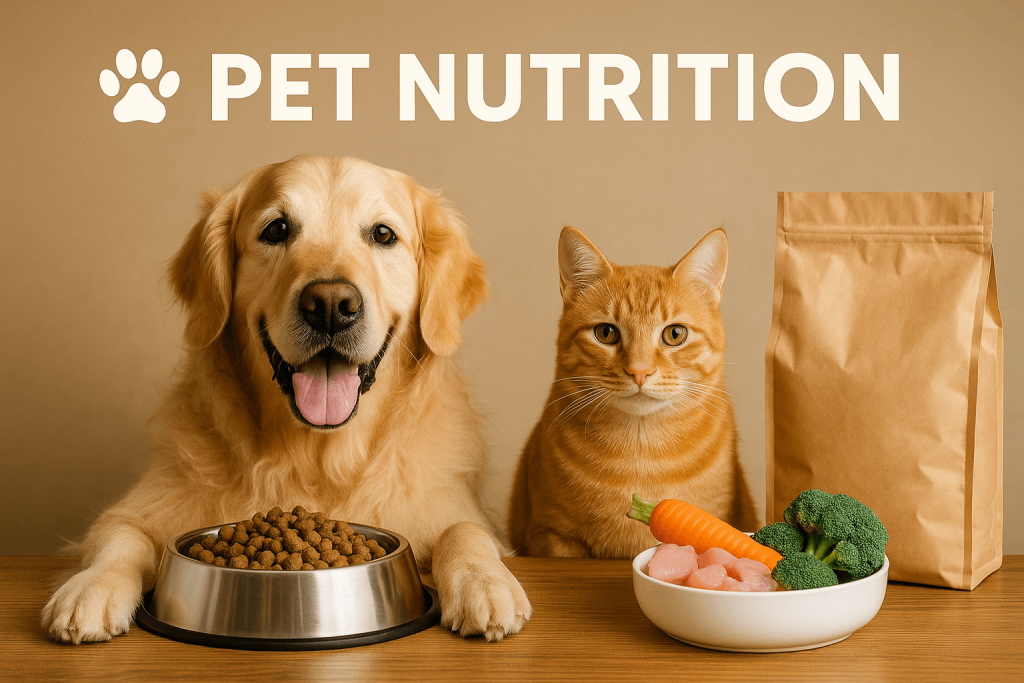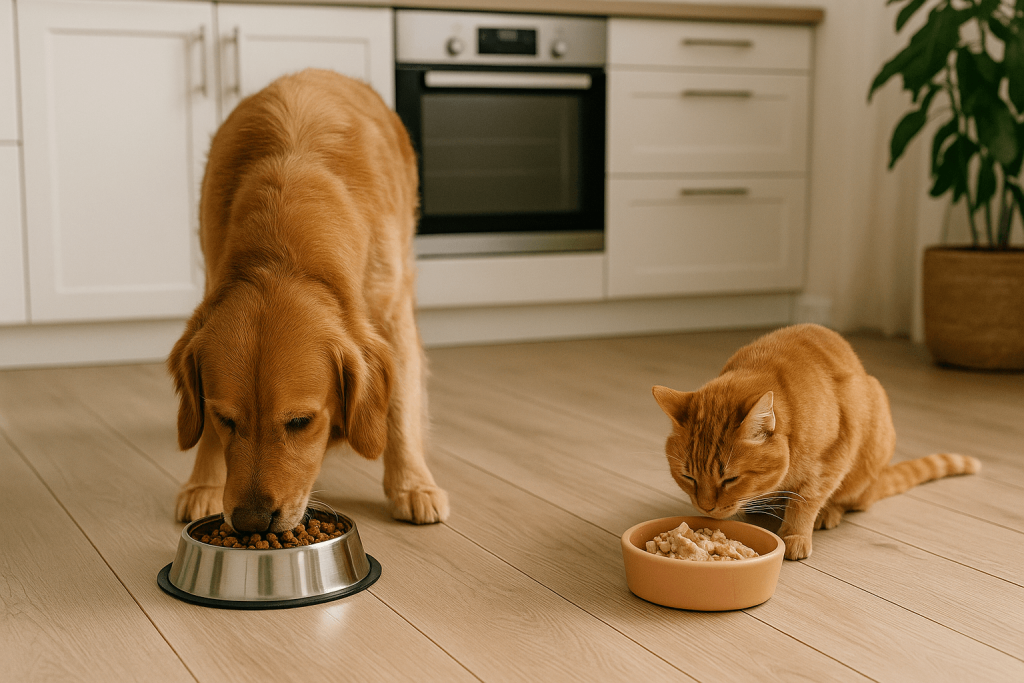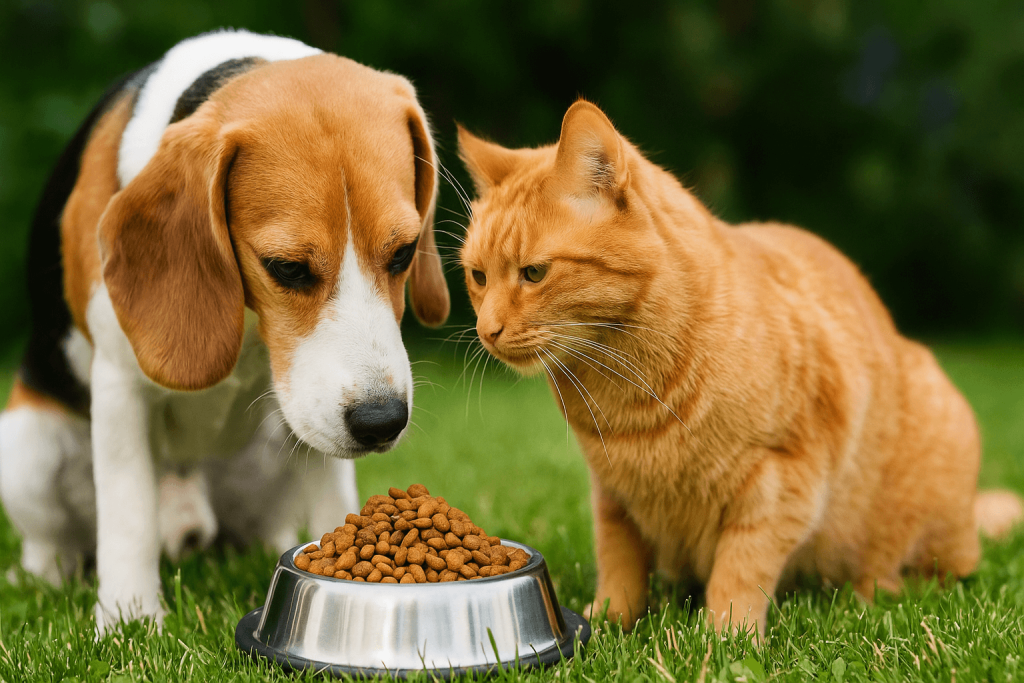Physical Address
304 North Cardinal St.
Dorchester Center, MA 02124
Physical Address
304 North Cardinal St.
Dorchester Center, MA 02124
The Best Pet Destinations
The Best Pet Destinations

Just like humans, pets thrive when they’re fueled with the right foods. A balanced diet plays a crucial role in keeping your furry friends healthy, energetic, and happy. From shiny coats and strong bones to better immunity and longer lifespans, the impact of proper pet nutrition cannot be overstated.
Unfortunately, many pet owners struggle with questions like: What’s the best food for my dog or cat? Should I try raw feeding? Are grains harmful? With so many options on the market and conflicting advice online, understanding pet nutrition can feel overwhelming.
That’s why this guide is here—to simplify things for you. By the end of this article, you’ll have a clear understanding of the essentials of balanced diets, how to read pet food labels, and what adjustments to make based on your pet’s age, lifestyle, and health needs. Whether you’re caring for a playful puppy, a curious kitten, or a senior pet, these insights will help you make smarter, healthier choices every day.
Food isn’t just fuel—it’s the foundation of your pet’s health and happiness. When pets receive the right balance of nutrients, they’re more active, maintain a healthy weight, and develop stronger immune systems. On the other hand, poor diets can lead to weight gain, skin issues, digestive troubles, and even serious long-term health conditions.
Proper pet nutrition directly affects:
One of the biggest mistakes pet owners make is assuming that all commercial food provides complete nutrition. While many brands meet minimum standards, the quality of ingredients varies widely. By learning the basics of pet nutrition, you can avoid common pitfalls and ensure your pet gets everything they need for a long, healthy life.
A healthy diet is built on balance. Pets, just like humans, require a mix of macronutrients and micronutrients to thrive. Understanding what each nutrient does—and why it matters—is the first step in making smarter choices about your pet’s food.
Proteins supply essential amino acids that support muscle development, tissue repair, and overall growth. For dogs and cats, protein should make up a significant portion of their diet. High-quality sources include chicken, beef, fish, and eggs. In pet nutrition, protein isn’t just a nutrient—it’s a necessity.
Fats are a concentrated source of energy and are vital for healthy skin and shiny coats. Omega-3 and Omega-6 fatty acids also play a role in brain development and joint health. In moderation, fats are a cornerstone of balanced pet nutrition.
Carbs provide energy, fiber, and aid digestion. While not strictly essential for cats (obligate carnivores), dogs can benefit from complex carbs like sweet potatoes, oats, and brown rice. The key is moderation and choosing nutrient-rich sources over fillers.
Vitamins and minerals regulate vital body functions such as bone strength, immunity, and metabolism. Calcium, phosphorus, vitamin A, and vitamin D are just a few examples. Quality pet food should contain these in proper proportions to support well-rounded nutrition.
Hydration is often overlooked, yet it’s the most vital nutrient of all. Water supports digestion, circulation, and temperature regulation. A golden rule of pet nutrition is to always provide fresh, clean water—especially if your pet eats primarily dry kibble.

While both dogs and cats need balanced diets, their nutritional requirements are quite different. Understanding these distinctions is essential for tailoring pet nutrition to your furry friend’s specific needs.
Dogs are omnivores, meaning they can digest both animal and plant-based foods. A balanced diet for dogs typically includes proteins, healthy fats, and complex carbohydrates. They also benefit from fruits and vegetables like carrots, apples, and spinach, which provide extra fiber and vitamins. Good pet nutrition for dogs should be high in protein while also offering a mix of nutrient-rich carbs and fats.
Cats are obligate carnivores, which means they rely almost entirely on animal-based proteins. Unlike dogs, they cannot produce certain essential nutrients—like taurine, arachidonic acid, and vitamin A—on their own, so these must come from meat. Proper pet nutrition for cats should focus heavily on protein and fat while minimizing unnecessary carbs.
The bottom line: pet nutrition must be species-specific. Feeding your cat or dog the wrong diet can result in nutrient deficiencies or long-term health problems.
For keeping balanced nutrition of your pets please follow PNA.
Pet owners today have more choices than ever before when it comes to feeding their furry companions. Each type of diet has its own advantages and drawbacks, and the best option depends on your pet’s age, health, and lifestyle. Understanding these choices is key to making smarter pet nutrition decisions.
Commercial diets are often formulated to meet basic standards, but quality varies. Always check ingredient lists and nutritional analysis to ensure proper pet nutrition.
Raw diets have gained popularity for their “natural” appeal. Advocates believe raw feeding supports shinier coats, better digestion, and higher energy. However, risks include bacterial contamination and unbalanced nutrient levels if not carefully prepared. Before switching, consult a vet to ensure safe and balanced pet nutrition.
Cooking for your pets allows full control over ingredients, which can be great for pets with allergies or sensitivities. However, it requires research and planning to avoid deficiencies. Without proper guidance, home cooking may lead to imbalanced pet nutrition despite good intentions.
For pets with specific health issues—like kidney disease, obesity, or diabetes—veterinarians may recommend prescription diets. These formulas are scientifically designed to support particular conditions and should always be fed under veterinary supervision.
Just like humans, pets have changing dietary needs as they grow older. A puppy’s or kitten’s diet looks very different from that of a senior pet. Tailoring food to each stage of life ensures your pet gets the right nutrients at the right time. This is one of the most important principles of pet nutrition.
Young pets grow rapidly, so they require diets rich in protein, fat, calcium, and DHA (an omega-3 fatty acid important for brain and vision development). Feeding specially formulated puppy or kitten food ensures they get the extra calories and nutrients needed for strong bones and healthy growth. Early-life pet nutrition sets the stage for lifelong health.
By adulthood, growth slows down, and pets need a balanced diet to maintain energy levels and a healthy weight. Overfeeding at this stage can lead to obesity, one of the most common problems in pet health. For adults, pet nutrition should focus on steady energy, lean muscle maintenance, and overall well-being.
Older pets often require fewer calories but higher levels of certain nutrients like antioxidants, fiber, and joint-supporting compounds (glucosamine, chondroitin, omega-3s). Specialized senior formulas make digestion easier and help manage age-related health conditions. Adjusting pet nutrition as pets age is vital for extending their quality of life.
Not all pets fit into the same dietary mold. Some face health challenges, allergies, or unique lifestyles that call for specialized diets. Paying attention to these needs ensures your pet stays healthy and comfortable, no matter their circumstances.
Obesity is one of the most common issues in pets today. It can lead to diabetes, arthritis, and heart disease. Weight management diets are lower in calories but rich in nutrients to help pets slim down without feeling deprived. Portion control is a cornerstone of effective pet nutrition in these cases.
Some pets are sensitive to common proteins like chicken or beef, while others may struggle with grains. Limited-ingredient diets or hypoallergenic formulas can help. One of the key pet nutrition strategies here is carefully monitoring ingredients and making gradual dietary changes.
Dogs that are highly active—such as herding, hunting, or service dogs—require extra calories, protein, and fat to fuel their energy. Similarly, active cats benefit from nutrient-dense diets that support lean muscle and stamina. For these pets, pet nutrition should prioritize performance and recovery.
Health conditions often require strict dietary management. For example:
In these cases, veterinary guidance is essential to manage conditions safely with proper pet nutrition.
Pet food packaging can be confusing, but learning to read labels is one of the most important skills for making informed decisions about pet nutrition. Not all foods are created equal, and flashy marketing terms don’t always mean healthier choices.
Ingredients are listed in order of weight, with the heaviest first. Look for whole protein sources—like chicken, beef, or salmon—at the top of the list. Be cautious of vague terms like “meat by-products” or “animal digest,” which are lower-quality protein sources.
Check the “Guaranteed Analysis” section for percentages of protein, fat, fiber, and moisture. While exact needs vary by species and life stage, protein should make up a significant portion for both dogs and cats. Balanced pet nutrition ensures these percentages meet your pet’s dietary requirements.
Watch out for fillers like corn, wheat, and soy used in excess—they add calories without much nutritional value. Artificial preservatives, colors, and flavors should also be avoided. A good rule of thumb for pet nutrition is to choose foods with natural, identifiable ingredients.
With so much information online, it’s easy to run into misleading advice about what pets should or shouldn’t eat. Separating fact from fiction is key to making the right decisions about pet nutrition.
Grain-free diets have become popular, but they’re not always necessary. Unless your pet has a diagnosed grain allergy (which is rare), whole grains like brown rice and oats can provide valuable nutrients and fiber. A well-balanced diet is more important than simply removing grains.
Many human foods—like onions, chocolate, grapes, and certain spices—are toxic to pets. Even small amounts of fatty foods can cause digestive upset or pancreatitis. One of the most important pet nutrition facts is that human food and pet food are not interchangeable.
Raw feeding has its supporters, but it also comes with risks, including bacterial contamination and unbalanced nutrient levels. While some pets thrive on raw diets, they should only be done under veterinary guidance to ensure complete and safe pet nutrition.
While protein is essential, too much can be harmful, especially for pets with kidney or liver issues. The right amount depends on age, activity level, and health condition. Balance is always better than excess when it comes to pet nutrition.

Even small changes can make a big difference in your pet’s overall health. Applying a few simple strategies ensures your pet gets the most out of their meals while keeping feeding routines safe and enjoyable.
Overfeeding is one of the leading causes of obesity in pets. Stick to recommended portion sizes based on your pet’s weight, age, and activity level. Feeding at consistent times each day helps regulate digestion and prevents begging behaviors—an easy win for better pet nutrition.
Adding safe, pet-friendly produce like carrots, blueberries, or green beans can provide extra fiber, vitamins, and antioxidants. Always research what’s safe before feeding, since some human foods are toxic. These natural boosters are one of the easiest ways to enhance pet nutrition.
Ensure fresh water is always available. For cats, consider adding wet food to their diet to increase moisture intake, which supports kidney and urinary health. Hydration is often overlooked but is a cornerstone of balanced pet nutrition.
Every pet is different. Consulting a veterinarian or pet nutritionist can help tailor a diet to your pet’s individual needs—whether that’s weight loss, allergy management, or performance nutrition. Professional guidance ensures your pet nutrition plan is both safe and effective.
Feeding your pet isn’t just about filling their bowl—it’s about fueling a healthy, happy life. From choosing the right proteins and fats to adjusting diets for age, activity, and health conditions, every choice you make impacts their well-being.
The pet nutrition principles covered in this guide highlight why balance, variety, and quality matter. By learning to read labels, avoiding common myths, and tailoring diets to your pet’s needs, you can help prevent illness, extend their lifespan, and boost their energy and mood.
Remember—good nutrition doesn’t have to be complicated. Small, consistent changes can make a world of difference. By applying these pet nutrition strategies today, you’ll be giving your furry friend the gift of better health, more vitality, and many more joyful years by your side.
👉 Start making smarter food choices now—your pet’s body (and wagging tail or purring) will thank you for it.
For more information please visit us Thank you!